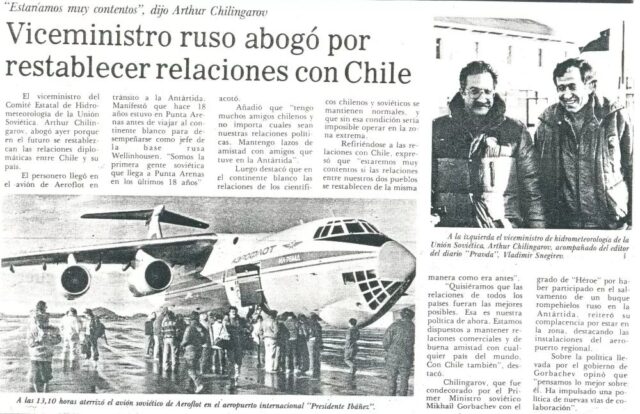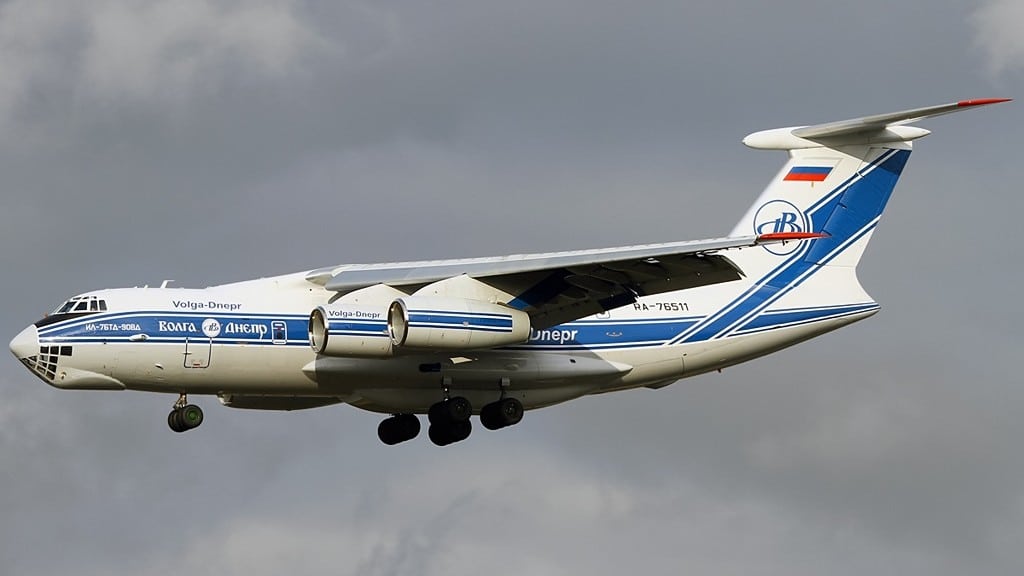The pro-Kremlin Russian media boasted about the first ever landing of the Il-76TD-90WD transport plane on the snow-ice landing pad at the Progriess polar station. The final leg of the journey – Cape Town to Antarctica, 5,200 kilometers in six and a half hours – was made on November 7. The plane belonging to the Volga-Dnieper line brought eighty-two passengers and 6.6 tons of cargo.
The landing field called Zienit was built this year. The name was chosen in honor of the St. Petersburg football club, because it is in St. Petersburg that the polar research institute has its headquarters – the Arkticheskij and Antarkticheskij educational-issledowatielskij institut. The runway is 3,000 meters long and 100 meters wide. The first landing took place in conditions of limited visibility, but it went smoothly.
The airport is based on the so-called blue ice, i.e. ice without air bubbles and microcracks (hence the blue color). Thanks to this, it is able to support the weight of over one-ton planes landing without the use of skids.
It is now summer in the southern hemisphere, which means milder weather conditions. This working season, the Russians want to organize four more flights from Cape Town to Zienit. The main purpose of the project is to transport workers and materials for the construction of a new winter complex at the Wostok station. Although this one is distant from Progriessu by almost 1,400 kilometers, it has its own runway adapted for smaller aircraft that will be able to carry out the last stage of deliveries.
Air Almaty’s Il-76TD on the Union Glacier in West Antarctica.
(Christopher Michel, Creative Commons Attribution 2.0 Generic)
Progriess is the youngest Russian research station in Antarctica, established on April 1, 1988. It is situated on the Prydza Bay, in an area with a relatively mild (for this continent) climate. There is also a smaller landing strip at Progriess station for light aircraft with low loads, opened in 2012.
Il-76 in Antarctica
Russians like to boast about the role that Ily-76 plays in polar research. The first landing of this type of aircraft on the continent took place on February 25, 1986. It was also the first ever ice landing of a heavy turbo-jet aircraft. The selected machine, with the side number SSSR-76479 and the proprietary name Antarktida, was subjected to modifications to adapt it to operate in polar conditions. The seven-day flight took place on the route Moscow – Leningrad – Larnaca – Djibouti – Maputo – Molodioznaya station – Novolazarevskaya station. The crew consisted of pilots Aleksandrow, Gołowczenko and Jakowlew and navigator Kisielew.
The plane delivered fifty-eight members of the 31st Soviet Antarctic Expedition and took away fifty-nine members of Expedition No. 30. Antarctica returned to Moscow on March 4.
In July 1989, the Il-76MD SSSR-76822 flew for the first time to Antarctica via a new western route: Moscow – Gander – Montreal – Minneapolis – Miami – Havana – Lima – Buenos Aires – Punta Arenas – Lieutenant Rodolf Marsh Martin base. The Chilean-owned destination airport is on King George Island, near the then Soviet, and now Russian, Bellinghausen station. In Minneapolis, where it was necessary to land with one engine inoperative, the plane took on board, among others, forty-two huskies. Unfortunately, two of them did not survive in the Cuban heat, where the stop was extended due to the repair of the engine.

July 1989 clipping from El Magallanes newspaper, article devoted to the presence of Il-76 in Punta Arenas. It was the first visit of a Soviet plane to a Chilean airport since August Pinochet came to power in 1973.
(via rg.ru)
At the end of the journey, the crew, led by the legendary Stanisław Blizniuk, the most famous test pilot working with Ilyushin’s planes, had to face a real challenge: to place the machine on an unpaved, rocky strip only 1,200 meters long at Lieutenant Marsh’s base. Even the side doors of the cargo compartment were opened as aerodynamic brakes to keep the coast as short as possible. The plane returned to Russia via Paris and Prague.
In August 1991, the Il-76TD, again commanded by Blizniuk, took the staff of the Molodioznaya station, which was now being closed. There were 135 people on board then. The Il-76TD-90WD with PS-90 engines appeared in Antarctica for the first time in November 2015, landing at the Novolazarevskaya station.
The Il-76 was for a long time the largest aircraft (in terms of maximum take-off weight – 190 tons) to ever land in Antarctica. In the end, however, it lost the lead to the C-17 Globemaster III (265 tons), and last year it was overtaken by the Airbus A340-300 (276 tons).
An Airbus A340 plane landed on an icy runway in Antarctica for the first time pic.twitter.com/jjmjejM8s3
– Reuters (@Reuters) November 29, 2021
See also: British minehunters and underwater drones for Ukraine
Konstantin von Wedelstaedt, GNU Free Documentation License, Version 1.2

